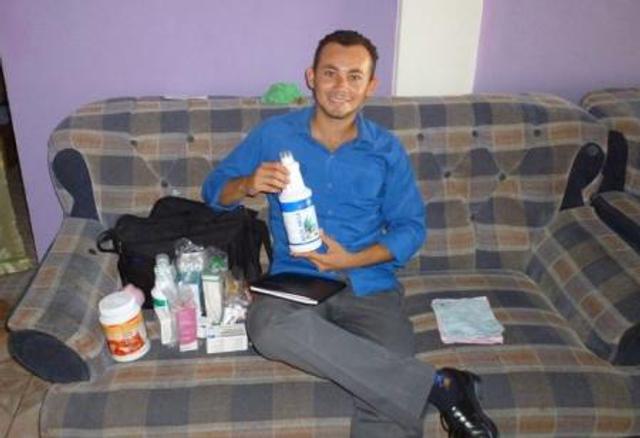Kiva: person-to-person micro-lending
- Exhibited by
- Kevin Waudby.
- Added
- June 27, 2012
- Medium of Communication
- Online
- Target Audience
- Individuals
- Type of Charity
- International relief / development
- Country of Origin
- USA
- Date of first appearance
- 2005
SOFII’s view
Such a simple idea that has achieved remarkable results in a relatively short time. Kiva has attracted people who possibly wouldn’t have dreamt of giving their money to charity, as well as helping those with smaller incomes to make a difference to the world.
Creator / originator
Matt Flannery.
Summary / objectives
Kiva is a nonprofit organisation with a mission to connect people through lending to alleviate poverty. Through the Internet and a worldwide network of microfinance institutions, Kiva lets individuals lend as little as $25 to support entrepreneurs and help create opportunity around the world.
Kiva - The Pedro Story
The simple story of Pedro, his family and Kiva.
Background
Matt Flannery began developing Kiva in late 2004 as a side project while working as a computer programmer at TiVo, Inc. In December 2005 he left his job to devote himself to Kiva full time and within a year it had lent over $1,000,000. From the start Kiva was winning a heap of accolades, including the New York Times Magazine ‘year in ideas’ 2006. Kiva really hit the big time when it was featured on the Oprah Winfrey Show with Bill Clinton in support. Since then over 760,000 people have lent almost $320,000,000 worth of loans to help entrepreneurs in developing countries work themselves out of poverty.
Matt has received a Skoll Foundation award for social entrepreneurship, is an Ashoka Fellow and was selected to Fortune magazine’s ‘top 40 under 40’ list in 2009. In 2011, he was chosen for the The Economist ‘no boundaries’ innovation award.
Special characteristics
Kiva has enabled the emergence of strong communities to unite in lending – and to compete with their lending. So the atheists compete with the Christians to out-lend each other. And the communities get together offline too. In 2011 10 events in 10 cities across the world saw Kiva lenders getting together to get to know each other in the flesh.
Influence / impact
As of May 2012:
- Number of countries represented by Kiva users: 220.
- Number of borrowers that have received a loan through Kiva: 792,463.
- Number of loans that have been funded through Kiva: 429,854.
- Percentage of Kiva borrowers who are women: 80.83 per cent.
- Number of Kiva field partners: 147.
- Number of countries where Kiva has field partners: 60.
Costs
See results.
Results
From the launch in 2005 until May 2012:
- Total amount of all loan purchases made through Kiva: $317,791,375.
- Number of Kiva users: 1,187,261.
- Number of Kiva users who have funded a loan: 769,213.
- Current repayment rate (all partners): 98.95 per cent.
- Average loan size (this is the average amount loaned to an individual Kiva borrower; some loans, group loans, are divided between a group of borrowers): $394.94.
- Average total amount lent per Kiva user (includes re-loaned funds): $267.67.
- Average number of loans per Kiva user: 8.28.
In 2011 alone Kiva’s total revenue was $13.6m, it spent 84 per cent of that on its programme and it lent $87.4m to entrepreneurs. Voluntary donations,grants, corporate sponsors and foundations cover all operational costs so 100 per cent of public donations go directly to the entrepreneurs funded by Kiva.
Merits
- It has created a completely new model of donation through a very simple idea – people in the developed world lending money to entrepreneurs in the developing world.
- It has created a whole new class of donor – it has opened up ‘philanthropy’ (in the sense of donors being privileged to choose who receives their money) to the masses.
- It aims to eradicate poverty through helping people help themselves, something we know donors are very keen on.
- It is one of a new breed of digital-first charities, whose starting place is the Web and who know how to make it work.
- It has used an online community to great effect creating competitiveness between communities and comradeship between individuals united by a common desire to see poverty alleviated through person-to-person lending.
Kiva Intercontintental Ballistic Microfinance
Share the excitement of when 620,000 lenders fund 615,000 entrepreneurs, students, and other microfinance borrowers around the world.
SOFII's I Wish I'd Thought Of That 2012 - No.15 Kevin Waudby presents Kiva


Also in Categories
-
- Digital fundraising
















